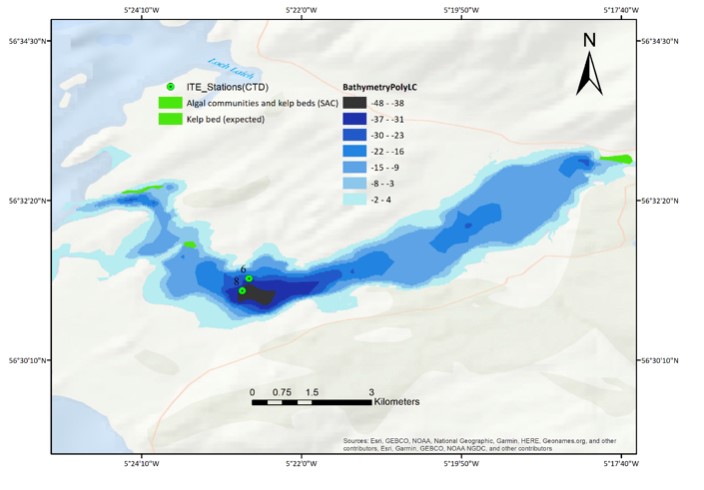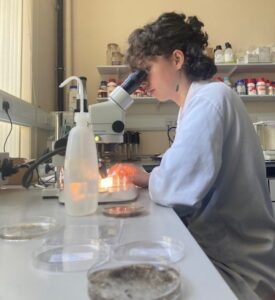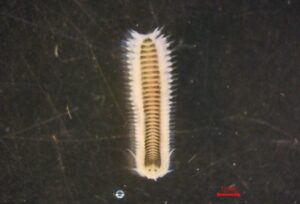Author: Lorna Barron, BSc Chemistry, University of Aberdeen
Project: Macroalgal detritus and food-web subsidies in a temperature Scottish fjord
Supervisor: Ursula Witte, School of Biological Sciences, University of Aberdeen
Hi! I’m a BSc Chemistry student at the University of Aberdeen in the beginning of my fourth and final year. Over the summer, a placement advertised in my student email account caught my eye, and I applied. It caught my eye because it was based in marine biology which, as a chemistry student, I had no prior knowledge about. I was keen to learn something completely new. The placement was called, “Macroalgal detritus and food-web subsidies in a temperature Scottish fjord”.
The overarching aim of the research team is to investigate how effective macroalgae are at sequestering carbon dioxide. This is clearly very relevant to climate change, so highly topical. So far, research into this has been limited. This overall aim is a big undertaking, and understanding has to be built up gradually. The research has to be broken down into smaller, more manageable chunks. The focus during the time I worked with the team was on understanding how benthic macrofauna use macroalgal detritus and store it in sediment.
What this comes down to in day-to-day lab work is collecting macrofauna samples, picking out species of interest (i.e., polychaetes, crustaceans, bivalves, gastropods, echinoderms), photographing and identifying them, and finally sending them off for 13C and 15N stable isotope analysis.
My experience on placement can be neatly separated into two halves – firstly sorting samples and then prepping for SIA. The samples I was working with were collected by the research team from Loch Creran earlier in the year.

 These photos aptly sum up that first part of the project. The first is of me, sorting through the sample. The second is a photo of my favourite, very handsome polychaete: Eumida genus. Make sure to take a look at his eyes – the two small black dots!
These photos aptly sum up that first part of the project. The first is of me, sorting through the sample. The second is a photo of my favourite, very handsome polychaete: Eumida genus. Make sure to take a look at his eyes – the two small black dots!
The samples were sent for stable isotope analysis because SIA is a fantastic tool for studying food webs and primary producer sources. Preparing the samples for SIA involves weighing, drying, weighing, acidifying, and weighing them again. With so many samples to sort, I quickly learnt how important it is to keep a comprehensive, legible lab notebook! My placement came to an end before the analysis bore conclusive results, but I remain in contact with the research team and look forward to seeing the progress they make over the next few years.
I can think of many things that arose from the placement that I’m grateful for.
During the placement, I was encouraged to join the weekly meetings, which are usually attended by the supervisor, PhD students and technicians. During these meetings, progress from the previous week was discussed, plans were made and finances discussed. This was immensely valuable, as it was my first opportunity to see how a research team functions day-to-day. It also made me appreciate how much money research really costs.
Spending 10 weeks working in a laboratory environment really boosted my confidence surrounding practical scientific work. I was encouraged to use the  knowledge I’ve learned during my time studying chemistry, and it was satisfying to realise that the material covered in my lectures was applicable in this branch of science. This couldn’t have come at a more perfect time, as immediately following the summer I began my compulsory year long research project in chemistry. The project is big, and can be overwhelming at times. Having a solid amount of experience in the lab really helped to calm my nerves.
knowledge I’ve learned during my time studying chemistry, and it was satisfying to realise that the material covered in my lectures was applicable in this branch of science. This couldn’t have come at a more perfect time, as immediately following the summer I began my compulsory year long research project in chemistry. The project is big, and can be overwhelming at times. Having a solid amount of experience in the lab really helped to calm my nerves.
The placement also gave me the opportunity to mull over my options for the future. A large portion of the credit for that has to go to the PhD student that I worked most closely with. He was very willing to share his own journey with me: from his first degree, to his PhD, to his future ambitions. He also played a huge role in making this placement so enjoyable and educational, and I extend my heartfelt gratitude to him. What I realised during the placement is that I’m interested in science communication, and the complexities of communicating research to other scientists, the public and politicians. I am now investigating possible routes that may lead to a career in science communication.





















































